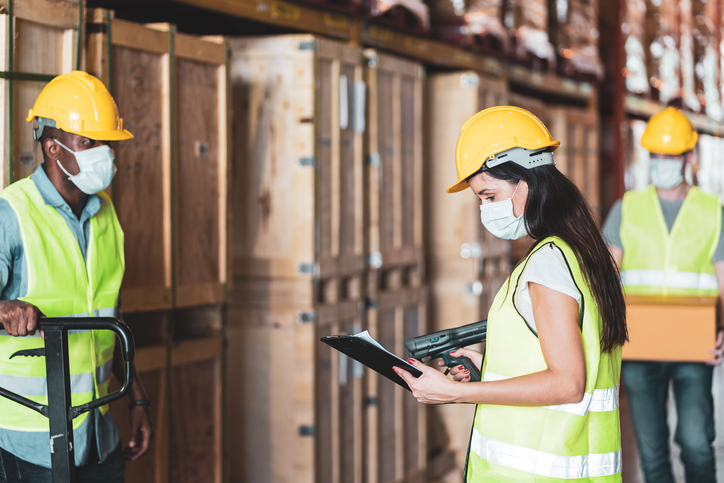 Within the last year, managing health and safety on the job site has taken on new significance for warehouse and distribution businesses.
Within the last year, managing health and safety on the job site has taken on new significance for warehouse and distribution businesses.
Covid-19 has a multiplying effect on health and safety activity. Businesses must do more to protect their workers while exploring new options to prevent on-site outbreaks.
How can warehousing and distribution employers meet these new health and safety challenges? Here are some recommendations based on what we have seen.
Evaluate the effectiveness of your current protocols. Even if your business has a strong foundation for implementing on-site health and safety best practices, a thorough review of relevant documentation is still recommended. Employers may need the addition of a Covid-19 addendum to the Master Services Agreement to address specific changes in training or workplace health guidelines.
Look for contract language that reflects what safety training will be performed by whom, and key safety issues such as the need for personal protective equipment (PPE) and who is responsible for providing that PPE. These items are usually outlined in the service contract from the beginning of a staffing partnership, which allows us to build on existing protocol rather than create from scratch.
Staying up to date with Covid-19 health and safety best practices can be difficult since rules vary by location and may change over time. The key to keeping up with rules and regulations is knowing where to find them. For example, using OSHA as a resource is always helpful.
Even during times of change, employers should continue to investigate injury reports, correct workplace hazards, and outline the responsibilities of their staffing partnerships.
Make sure to keep your contract workforce involved. As job site conditions relating to Covid-19 change, this part of your workforce needs to be kept as up to date as the full-time workforce. The contract workforce can also be a valuable resource. These workers experience different aspects of on-the-ground conditions, and asking for employee input makes workers feel more comfortable and motivated.
PREMIUM CONTENT: US Staffing Occupational Markets Guidebook 2021
Improving communication is critical. Existing contract language may cover a lot of ground in addressing the new state of health and safety. However, the methods used to maintain and implement key initiatives have changed drastically.
Virtual tours with health and safety representatives are becoming more common. The effectiveness of these tours depends on the quality of communication and mutual trust on both sides. Increasing the volume and specificity of the questions asked and being intentional with your communications will lead to more effective tours.
Training is another area where communication methods may need to change. Forklift and pallet jack operators need both classroom and hands-on training when being certified to operate powered industrial truck equipment. This can present challenges due to social distancing guidelines, but all training must still occur in accordance with OSHA regulations and we are seeing more creative approaches emerge.
The goal of improving communications should be to keep a good relationship with your workforce, including contract laborers and temporary workers. Without as many face-to-face interactions, small issues can develop into larger problems. Instituting new ways of getting worker feedback will also keep employees engaged and productive.
Anticipate new and changing regulations. While federal guidance from OSHA serves as a good baseline for health and safety best practices, some locales may have more stringent guidelines. Local governments can mandate new procedures at the drop of a hat in response to outbreaks and surges. Employers should frequently check if updates have been made to local emergency orders involving Covid-19 safety.
The easiest way to stay on top of Covid-19 protocols is to be more cautious than the regulations stipulate. Keep your people safe at work whether there is a law or not.
Building flexible protocols that can respond to shifting Covid-19 guidelines is a great start. You can expect more regulatory changes are on the horizon. Warehousing and distribution employers may feel burdened to respond quickly as Covid-19 increases scrutiny on health and safety regulations.
Maintaining a high level of on-site health and safety requires an active partnership between staffing vendors and your contract workforce. The process is certainly more complex due to Covid-19, but it also offers a key competitive advantage. When your people feel valued, cared for and listened to, they tend to go the extra mile to deliver productivity.